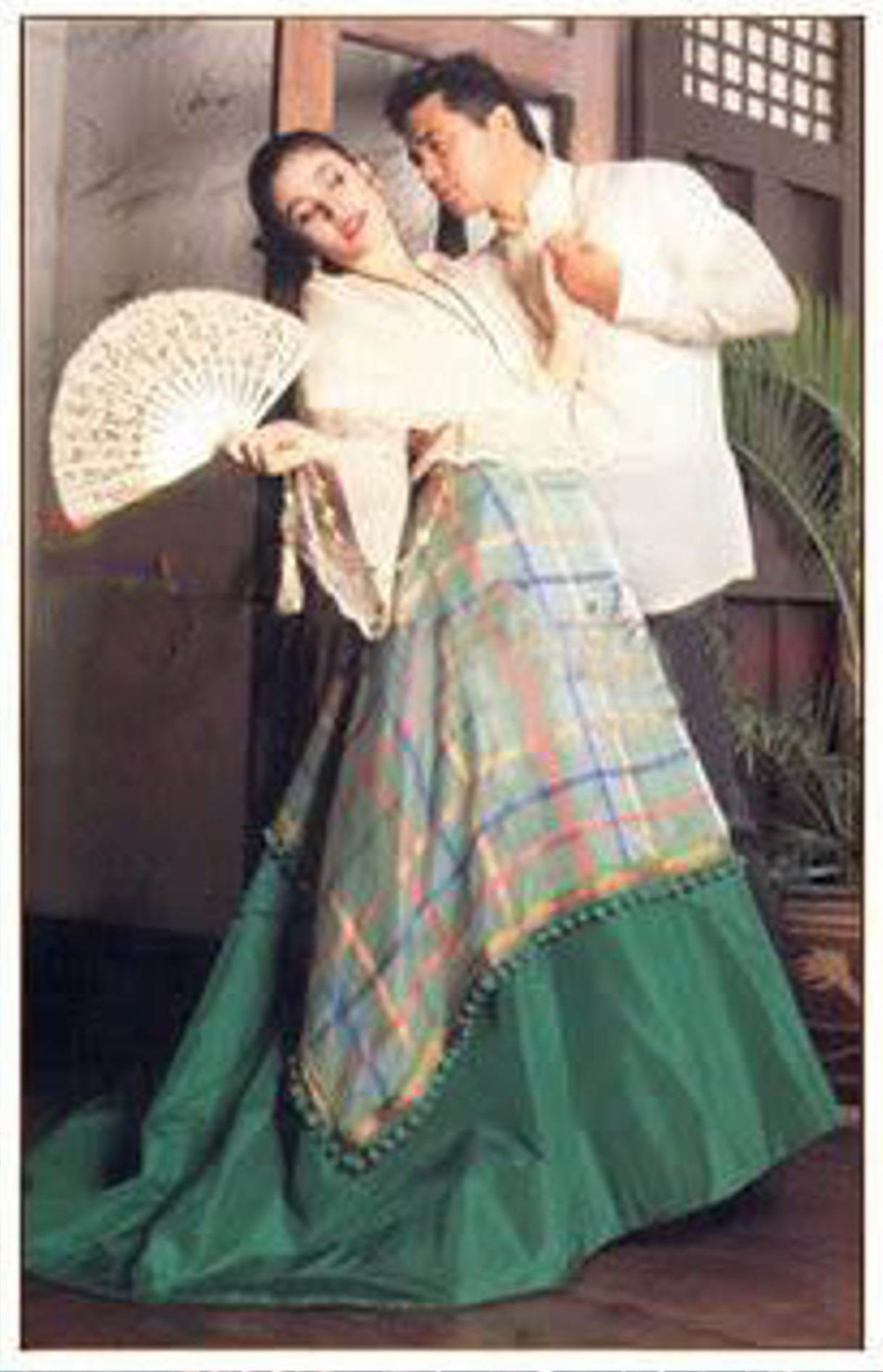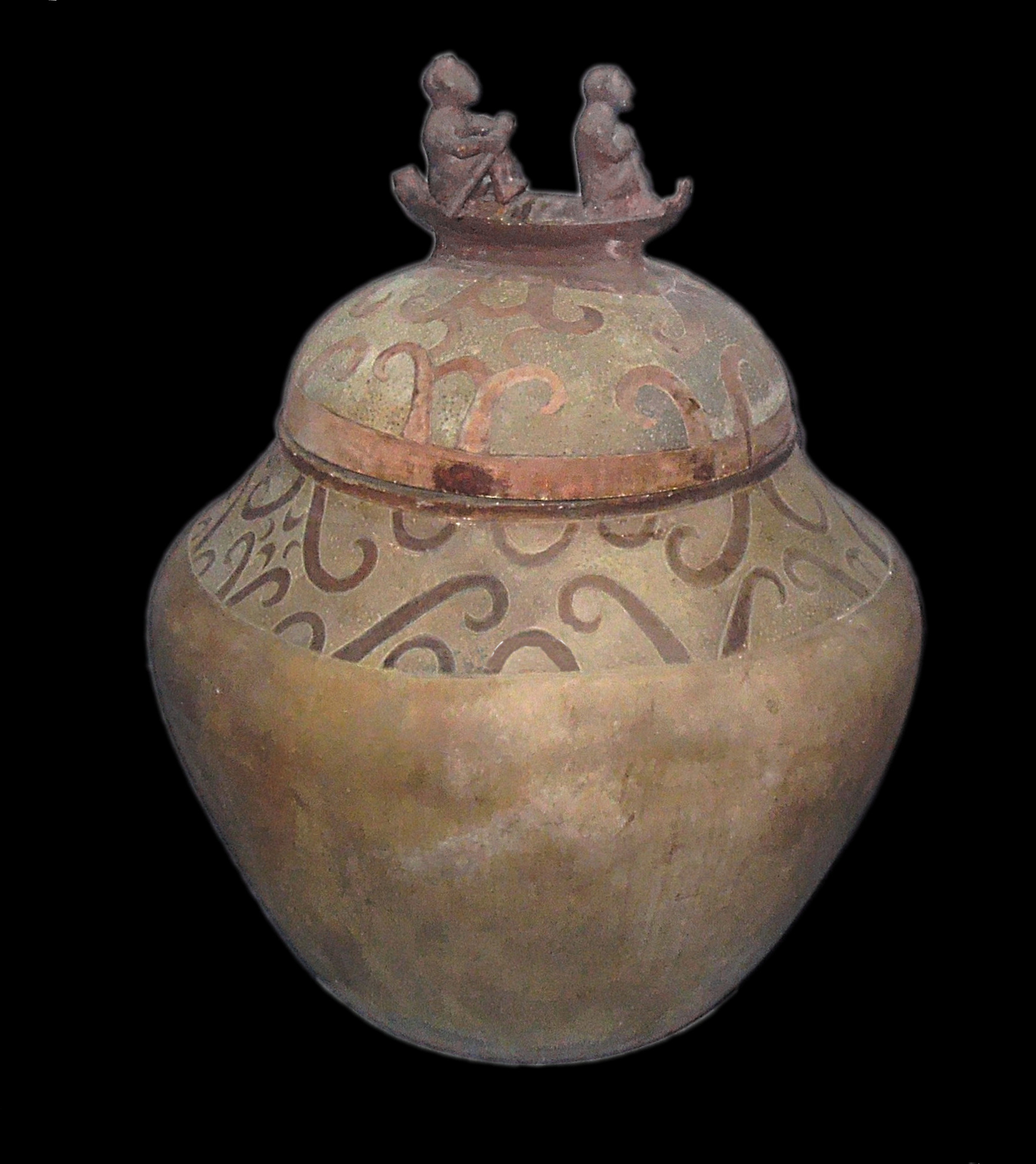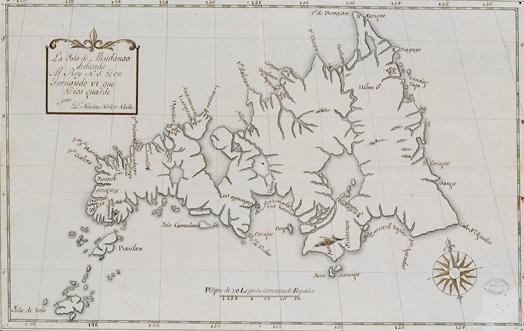|
Philippine Dance
The Philippines is home to several folk dances such as ''Tinikling'', '' Pandanggo'', '' Cariñosa'', and '' Subli''. Dance has integrated itself in Philippine society over the course of many years and is imbedded in Philippine culture. Types of dances by ethnic group The following are various indigenous dances of the major ethnic groupings of the Philippines Igorot There are six Igorot ethnolinguistic tribes living in Luzon's mountain terrains: the Bontoc, Ifugao, Benguet, Apayo, and the Kalinga tribes, which retained much of their ''anito'' religions. Their lives have been centered on appeasing their gods and maintaining a harmonious relationship between spirits and man. Dances are usually linked to rituals for a good harvest, health, prayers for peace, and safety in war. Moro The Moro people are the various usually unrelated Muslim Filipino ethnic groups. Most of their dances are marked by intricate hand and arm movements, accompanied by instruments such as the ago ... [...More Info...] [...Related Items...] OR: [Wikipedia] [Google] [Baidu] |
Tinikling
Tinikling (traditionally written tiniclín) is a traditional Philippine folk dance which originated prior to Spanish colonialism in the area. The dance involves at least two people beating, tapping, and sliding bamboo poles on the ground and against each other in coordination with one or more dancers who step over and in between the poles in a dance. It is traditionally danced to rondalla music, a sort of serenade played by an ensemble of stringed instruments which originated in Spain during the Middle Ages. The locomotor movements used in this dance are hopping, jumping, and turning. Origin The name ''tinikling'' is a reference to birds locally known as ''tikling'', which can be any of a number of Rallidae, rail species, but more specifically refers to the slaty-breasted rail (''Gallirallus striatus''), the buff-banded rail (''Gallirallus philippensis''), and the barred rail (''Gallirallus torquatus''). The term ''tinikling'' literally means "to perform it ''tickling-like." ... [...More Info...] [...Related Items...] OR: [Wikipedia] [Google] [Baidu] |
Kulintang
Kulintang (, ) is a modern term for an ancient instrumental form of music composed on a row of small, horizontally laid gongs that function melodically, accompanied by larger, suspended gongs and drums. As part of the larger gong-chime culture of Southeast Asia, kulintang music ensembles have been playing for many centuries in regions of the Mindanao, Southern Philippines, East Malaysia, Eastern Malaysia, Regions of Indonesia#Eastern Indonesia, Eastern Indonesia, Brunei and Timor, Kulintang evolved from a simple native signaling tradition, and developed into its present form with the incorporation of knobbed gongs from Sundanese people in Java Island, Indonesia. Its importance stems from its association with the indigenous cultures that inhabited these islands prior to the influences of Hinduism, Buddhism, Islam, Christianity or Western world, the West, making kulintang the most developed tradition of Southeast Asian archaic gong-chime ensembles. Technically, ''kulintang'' is t ... [...More Info...] [...Related Items...] OR: [Wikipedia] [Google] [Baidu] |
Patadyong
The patadyong (, also called patadyung, patadjong, habol, or habul), is an indigenous rectangular or tube-like wraparound skirt worn by both men and women of the Visayas and the Sulu Archipelago of the Philippines, similar to the Malong, or Sarong. It was also historically worn in parts of Luzon like Pampanga and Sorsogon. In the History of the Philippines (900–1565), precolonial Philippines, it was usually worn with a ''barong tagalog, barú'' or ''bayú'', a simple collar-less shirt or jacket with close-fitting long sleeves. During the Spanish period, this evolved into the ''kimona'', a variant of the baro't saya worn by Christianized lowland Visayans consisting of a loose translucent blouse, an undershirt, and a patadyong or a patadyong-patterned skirt. The patadyong is identical to the malong used in mainland Mindanao, but is longer than the tapis (Philippine clothing), tapis of Luzon; it is also identical to the sarong of neighboring Indonesia, Brunei, and Malaysia, for w ... [...More Info...] [...Related Items...] OR: [Wikipedia] [Google] [Baidu] |
Anito
''Anito'', also spelled ''anitu'', refers to ancestor spirits, nature spirits, and deities in the Indigenous Philippine folk religions from the precolonial age to the present, although the term itself may have other meanings and associations depending on the Filipino ethnic group. It can also refer to carved humanoid figures, the ''taotao'', made of wood, stone, or ivory, that represent these spirits. ''Anito'' (a term predominantly used in Luzon) is also sometimes known as ''diwata'' in certain ethnic groups (especially among Visayans). ''Pag-anito'' refers to a séance, often accompanied by other rituals or celebrations, in which a shaman ( Visayan: ''babaylan'', Tagalog: ''katalonan'') acts as a medium to communicate directly with the dead ancestors and spirits. When a nature spirit or deity is specifically involved, the ritual is called ''pagdiwata''. The act of worship or a religious sacrifice to a spirit and deities. The belief in ''anito'' are sometimes refer ... [...More Info...] [...Related Items...] OR: [Wikipedia] [Google] [Baidu] |
Kuntao
Kuntao or kuntau (, ) is a Min Nan, Hokkien term for the martial arts of the Chinese community of Southeast Asia, specifically the Malay Archipelago. It is most commonly practiced in and associated with Indonesia, Malaysia, the Philippines and Singapore. Etymology There are no standard hanzi for kuntao, but the most common reading is "way of the fist", from ''kun'' 拳 meaning fist and ''tao'' 道 meaning way. Less common readings may use the character ''kun'' 棍 meaning staff, or ''tou'' 头 meaning head, so that it could be translated as "way of the staff" or roughly "knowledge of fists". In Fujian and other southern areas, this term was originally used for Chinese martial arts in general and was synonymous with ''quanfa'' (拳法, Pe̍h-ōe-jī: kûn-hoat). The word is recorded in Classical Malay and Indonesian language, Indonesian, making it the oldest known term for Chinese martial arts in those languages, before the modern adoption of the term ''kungfu''. In English, and e ... [...More Info...] [...Related Items...] OR: [Wikipedia] [Google] [Baidu] |
Animistic
Animism (from meaning 'breath, Soul, spirit, life') is the belief that objects, places, and creatures all possess a distinct Spirituality, spiritual essence. Animism perceives all things—animals, plants, Rock (geology), rocks, rivers, Weather, weather systems, human handiwork, and in some cases words—as being animated, having agency and free will. Animism is used in anthropology of religion as a term for the Belief, belief system of many Indigenous peoples in contrast to the relatively more recent development of organized religions. Animism is a metaphysics, metaphysical belief which focuses on the Supernatural, supernatural universe: specifically, on the concept of the immaterial soul. Although each culture has its own mythologies and rituals, animism is said to describe the most common, foundational thread of indigenous peoples' "spiritual" or "supernatural" perspectives. The animistic perspective is so widely held and inherent to most indigenous peoples that they often do ... [...More Info...] [...Related Items...] OR: [Wikipedia] [Google] [Baidu] |
Lumad People
The Lumad are a group of Austronesian indigenous peoples in the southern Philippines. It is a Cebuano term meaning "native" or "indigenous". The term is short for Katawhang Lumad (Literally: "indigenous people"), the autonym officially adopted by the delegates of the Lumad Mindanao Peoples Federation (LMPF) founding assembly on 26 June 1986 at the Guadalupe Formation Center, Balindog, Kidapawan, Cotabato. Usage of the term was accepted in Philippine jurisprudence when President Corazon Aquino signed into law Republic Act 6734, where the word was used in Art. XIII sec. 8(2) to distinguish Lumad ethnic communities from the islands of Mindanao. Mindanao is home to a substantial part of the country's indigenous population, comprising around 15% of the Philippine population.National Statistics Office. "Statistics on Filipino Children." Journal of Philippine Statistics, vol. 59, no. 4, 2008, p. 119. History The name ''Lumad'' grew out of the political awakening among tribes dur ... [...More Info...] [...Related Items...] OR: [Wikipedia] [Google] [Baidu] |
Mindanao
Mindanao ( ) is the List of islands of the Philippines, second-largest island in the Philippines, after Luzon, and List of islands by population, seventh-most populous island in the world. Located in the southern region of the archipelago, the island is part of an island group of the same name that also includes its adjacent islands, notably the Sulu Archipelago. According to the 2020 census, Mindanao had a population of 26,252,442, while the entire island group had an estimated population of 27,021,036. Mindanao is divided into six administrative regions: the Zamboanga Peninsula, Northern Mindanao, the Caraga region, the Davao Region, Davao region, Soccsksargen, and the autonomous region of Bangsamoro. According to the 2020 census, Davao City is the most populous city on the island, with 1,776,949 people, followed by Zamboanga City (pop. 977,234), Cagayan de Oro (pop. 728,402), General Santos (pop. 697,315), Butuan (pop. 372,910), Iligan (pop. 363,115) and Cotabato City (pop. ... [...More Info...] [...Related Items...] OR: [Wikipedia] [Google] [Baidu] |
Bahag (garment)
Bahag is a loincloth that was commonly used by men throughout the pre-colonial Philippines. It is worn shirtless with no other extra garments. They were either made from barkcloth or from hand- woven textiles. Before the colonial period, bahag were a common garment for commoners and the serf class (the ''alipin'' caste). Bahag survives in some indigenous tribes of the Philippines today - most notably the Cordillerans in Northern Luzon. Description The specific way to wear it involves first pulling the long piece of cloth (usually around ) in between the legs and covering the genitals, with a longer back part. The back part is then twisted across the right leg and across the waist in an anti-clockwise direction. It goes under the flap of the front part and across the left leg. It is twisted back across the back loop above the buttocks. The result resembles two rectangles of cloth hanging in front of and behind the waist, with a loop around the legs resembling a belt. The desig ... [...More Info...] [...Related Items...] OR: [Wikipedia] [Google] [Baidu] |
Malong
The malong is a traditional Filipino-Bangsamoro rectangular or tube-like wraparound skirt bearing a variety of geometric or okir designs. The malong is traditionally used as a garment by both men and women of the numerous ethnic groups in the mainland Mindanao and parts of the Sulu Archipelago. They are wrapped around at waist or chest-height and secured by tucked ends, with belts of braided material or other pieces of cloth, or are knotted over one shoulder. They were traditionally hand-woven, with the patterns usually distinctive to a particular ethnic group. However, modern malong are usually machine-made or even imported, with patterns that mimic the traditional local designs. Description Handwoven malongs are made by Maranao, Maguindanaon, and T'boli weavers on a backstrap loom. The pattern or style of the malong may indicate the weaver's tribal origin, such as the Maranao ''malong landap''. Very rare malong designs and styles can indicate the village in which the malon ... [...More Info...] [...Related Items...] OR: [Wikipedia] [Google] [Baidu] |
Kampilan
The kampilan (Baybayin: ) is a type of single-edged sword, traditionally used by various Ethnic groups in the Philippines, ethnic groups in the Philippine archipelago. It has a distinct profile, with the tapered Sword#Blade, blade being much broader and thinner at the point than at its base, sometimes with a protruding spikelet along the flat side of the tip. The design of the pommel (sword), pommel varies between ethnic groups, but it usually depicts either a ''buaya'' (crocodile), a ''bakunawa'' (sea serpent), a ''kalaw'' (Rufous hornbill, hornbill), or a ''kakatua'' (Red-vented cockatoo, cockatoo).. This weapon was featured in the American bladesmithing competition, ''Forged in Fire (TV series), Forged in Fire'', in season 4 episode 16. Names "Kampilan" is the term most commonly used for the sword in the Tagalog language, Tagalog, Ilocano language, Ilocano and Visayan languages. It simply means "sword". It is known by other names in other ethnic groups in the Philippines incl ... [...More Info...] [...Related Items...] OR: [Wikipedia] [Google] [Baidu] |
Sagayan
Sagayan is a Philippine war dance performed by Maguindanao, Maranao, and Iranun depicting in dramatic fashion the steps their hero, Prince Bantugan, took upon wearing his armaments, the war he fought in and his subsequent victory afterwards. Performers, depicting fierce warriors, would carry shields with shell noisemakers in one hand and a kampilan sword on the other. Dancers of the Sagayan wear atypical costumes based on mythological descriptions of Bantugan's equipment in the epic ''Darangen''. He was described as wearing the (a headdress with embedded mirrors), clothes with the colors of the rainbow, a (shield) made of the hardest wood and with small bells, a blindingly shiny kampilan (a large double-tipped war sword) tied to the wrist with five or seven holes decorated with animal hair, and a (a shorter secondary sword). Among the Maguindanao people, the is usually interpreted as a (a traditional conical headdress), brightly colored and decorated with feathers, mirrors, ... [...More Info...] [...Related Items...] OR: [Wikipedia] [Google] [Baidu] |







